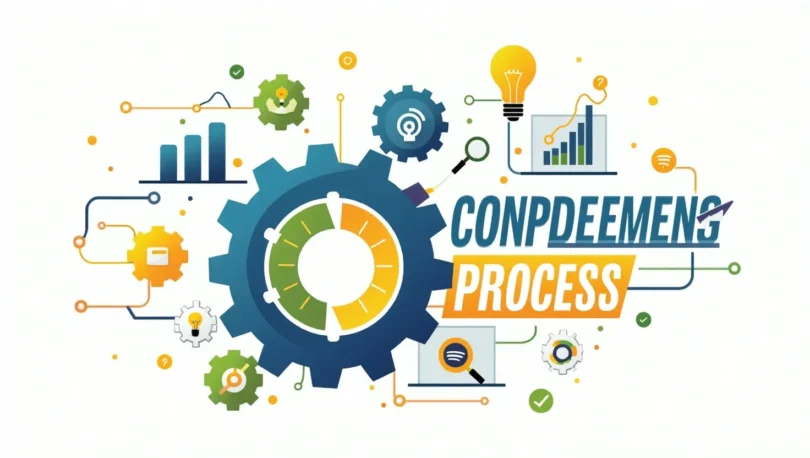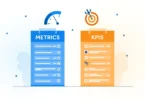In a world that is constantly evolving, the pursuit of growth and progress is an ongoing journey. Whether you’re striving for personal development, business success, or career advancement, achieving meaningful change requires more than just one-time efforts—it’s about adopting a mindset of continuous improvement. The Continuous Improvement Process (CIP) is a strategic approach that focuses on making small, incremental changes over time to achieve lasting results.
At its core, the continuous improvement process emphasizes refinement and adaptation. It encourages individuals and organizations to regularly evaluate their practices, identify areas for growth, and make adjustments in a way that leads to better performance, higher efficiency, and personal satisfaction. The beauty of this process lies in its cumulative impact—even minor improvements, when applied consistently, can lead to significant long-term success.
In this post, we’ll explore the key principles of the continuous improvement process, how to measure progress effectively, and the importance of staying motivated through the journey of growth. By adopting this mindset, you can transform your goals into tangible, achievable realities.
Headlines
Understanding the Continuous Improvement Process for Goal
Implementing the Continuous Improvement Process in Goal Setting
Overcoming Challenges and Staying Committed to Continuous Improvement
Understanding the Continuous Improvement Process for Goal
What is the Continuous Improvement Process?
The Continuous Improvement Process (CIP) is a structured approach to making consistent, incremental progress toward goals over time. Instead of chasing overnight success, this method focuses on small, manageable changes that accumulate into significant improvements.
At its core, CIP is about ongoing refinement—analyzing what works, identifying inefficiencies, and making necessary adjustments. Whether applied to personal development, business growth, or goal achievement, the philosophy remains the same: continuous progress leads to lasting success.
Core Principles of Continuous Improvement
The Continuous Improvement Process is based on several key principles:
- Incremental Growth: Small changes over time lead to sustainable success.
- Feedback and Reflection: Regularly reviewing progress helps refine strategies.
- Flexibility and Adaptability: Adjusting goals and strategies as needed ensures resilience.
- Efficiency Over Perfection: The focus is on improving, not achieving perfection overnight.
How CIP Applies to Personal Development and Goal Setting
In the context of personal growth and goal setting, the Continuous Improvement Process helps individuals stay on track by:
- Breaking large goals into smaller steps – making progress manageable and less overwhelming.
- Encouraging a mindset shift – from seeing failure as an obstacle to viewing it as feedback.
- Reinforcing discipline and consistency – by tracking and tweaking habits for long-term improvement.
For example, instead of setting a vague goal like “I want to be more productive,” a CIP-based approach would involve:
- Identifying small, actionable steps (e.g., setting a 10-minute morning planning routine).
- Tracking effectiveness over time (e.g., journaling daily productivity levels).
- Making gradual adjustments (e.g., tweaking work habits based on what works best).
Examples from Lean Methodology, Six Sigma, and Kaizen
Several well-known business and productivity frameworks emphasize continuous improvement, showing its effectiveness across various fields:
- Kaizen (Japanese Philosophy of Continuous Improvement):
- Kaizen means “change for the better” and promotes daily, incremental improvements.
- This principle is widely used in business efficiency, workplace productivity, and self-improvement.
- In personal growth, applying Kaizen might mean committing to reading 10 pages a day instead of attempting to finish an entire book in one sitting.
- Six Sigma (Process Improvement Technique):
- Originally used in manufacturing and business, Six Sigma focuses on eliminating inefficiencies to optimize performance.
- In personal development, this could mean removing distractions or optimizing your schedule to improve productivity.
- PDCA Cycle (Plan-Do-Check-Act):
- A structured approach to implementing continuous improvement.
- Helps individuals and businesses test and refine strategies to maximize success.
- Useful for refining habits, tracking goal progress, and making necessary adjustments over time.
Why the Continuous Improvement Process Works
Unlike traditional goal-setting, which often focuses on end results, CIP emphasizes the journey of growth. By making small improvements every day, you build momentum, resilience, and long-term success.
This process is particularly beneficial because it:
- Reduces overwhelm by focusing on small, manageable changes.
- Creates lasting habits instead of relying on short bursts of motivation.
- Promotes self-reflection and encourages ongoing learning and adjustment.
By embracing the Continuous Improvement Process, you transform not only your goals but also your mindset, making success a consistent and achievable outcome. 🚀
The Role of Small, Incremental Changes in Success
Success is rarely the result of one massive effort or a single defining moment. Instead, it is the outcome of consistent, small improvements over time. The Continuous Improvement Process (CIP) is built on the idea that gradual, incremental progress leads to significant, lasting achievements. This concept applies to personal development, goal achievement, and habit formation, reinforcing the importance of daily progress rather than seeking instant results.
The Kaizen Approach: Small Steps Lead to Big Results
The Kaizen philosophy, originating from Japan, emphasizes continuous, small improvements rather than drastic changes. Businesses use this method to enhance efficiency, but it is equally effective in personal growth and goal setting. The idea is simple: instead of trying to overhaul your entire routine or make dramatic changes overnight, focus on making tiny, consistent improvements that gradually lead to major transformations.
For example:
- Instead of attempting to exercise for an hour daily, start with five minutes of movement and build from there.
- Rather than setting an unrealistic goal to read an entire book in a day, commit to reading just one page each morning.
- When trying to improve time management, begin by blocking out just one focused work session per day before expanding.
These small changes may seem insignificant at first, but over time, they compound, creating meaningful progress.
Neuroscience of Habit Formation: How the Brain Adapts to Gradual Change
The brain is wired to resist sudden, drastic changes because they require a significant amount of willpower and cognitive effort. However, small, incremental changes are easier for the brain to accept, making them more sustainable.
Research in neuroscience shows that habits are formed through a loop of cue, routine, and reward. When small actions are repeated consistently, they become ingrained into daily behavior, requiring less effort over time. This is why strategies like habit stacking—where a new habit is added to an existing routine—are effective.
For instance:
- If the goal is to start meditating, adding a one-minute breathing exercise right after brushing your teeth can help establish the habit.
- If improving nutrition is a priority, replacing one unhealthy snack with a healthier alternative rather than overhauling the entire diet increases the likelihood of long-term success.
By taking small steps, the brain gradually adapts, making the new habit feel natural rather than forced.
Growth vs. Fixed Mindset: The Psychological Impact of Incremental Progress
Psychologist Carol Dweck introduced the concept of growth vs. fixed mindset, which plays a crucial role in continuous improvement.
- A fixed mindset views abilities and intelligence as static, often leading to frustration when progress is slow.
- A growth mindset, on the other hand, sees effort and learning as the foundation of success.
The Continuous Improvement Process aligns with a growth mindset, as it encourages people to embrace challenges, learn from setbacks, and see progress as a journey rather than a destination. Small, incremental improvements reinforce the belief that success is achievable through persistence and adaptability, reducing the fear of failure.
Real-World Applications of Incremental Change
The power of small improvements is evident in many success stories:
- Athletes train by making minor adjustments to their routines, refining their skills over time.
- Writers improve by writing a little each day rather than waiting for inspiration to strike.
- Entrepreneurs optimize their businesses by testing and refining strategies rather than implementing large-scale changes all at once.
The 1% Rule, popularized by productivity experts like James Clear, states that if you improve by just 1% every day, the cumulative effect over time leads to remarkable transformation.
Why Small Changes Lead to Long-Term Success
- They are easier to implement and sustain.
- They minimize resistance and overwhelm, making progress feel more natural.
- They create momentum, reinforcing motivation and confidence.
- They allow for flexibility, enabling adjustments without feeling like a failure.
By focusing on consistent, small improvements, success becomes not just an eventual outcome, but an ongoing process of growth and refinement.
Implementing the Continuous Improvement Process in Goal Setting
Using the PDCA Cycle to Track Progress
The PDCA Cycle (Plan-Do-Check-Act) is a systematic approach to continuous improvement that helps individuals and businesses refine their processes, track progress, and achieve goals more effectively. Originally developed by Dr. W. Edwards Deming, this cycle is widely used in business management, quality control, and personal development to ensure steady progress through structured evaluation and adjustment.
By following the PDCA Cycle, individuals can move beyond vague goal-setting and create a repeatable system for success. It allows for regular self-assessment, preventing stagnation and ensuring that improvements are measurable, adaptable, and sustainable over time.
Step 1: Plan – Setting a Clear Path for Improvement
The first phase of the PDCA Cycle is planning, which involves identifying what needs improvement and defining the steps to achieve progress. This step requires careful analysis and goal-setting to establish a strong foundation before taking action.
Key aspects of the planning stage include:
- Defining objectives: Clearly outlining what needs to be improved, such as productivity, skill development, or personal habits.
- Gathering data: Analyzing past performance to identify patterns and areas for growth.
- Creating an action plan: Establishing a step-by-step strategy with measurable milestones.
For example, if the goal is to increase focus during work hours, the planning stage might involve:
- Identifying distractions that reduce productivity.
- Researching time management techniques.
- Setting a goal to implement the Pomodoro Technique for structured work sessions.
Without a clear plan, improvement efforts may lack direction, making it difficult to track progress effectively.
Step 2: Do – Implementing the Plan in Small Steps
The second stage is about taking action, but in a controlled and manageable way. Instead of making drastic changes all at once, the “Do” phase focuses on testing small improvements to observe how they work in real situations.
Key considerations during this phase include:
- Starting with small, realistic changes to avoid overwhelm.
- Keeping a record of actions taken to analyze effectiveness later.
- Maintaining consistency by following the planned steps without major deviations.
Using the earlier example of increasing focus, the “Do” phase might involve:
- Implementing 30-minute focused work sessions followed by short breaks.
- Turning off unnecessary notifications during work hours.
- Tracking productivity levels daily to measure changes.
This stage is crucial because it allows individuals to test improvements in a low-risk environment before committing to long-term changes.
Step 3: Check – Evaluating Progress and Identifying Adjustments
The “Check” phase involves analyzing the results of the actions taken in the previous step. Without evaluation, it is impossible to know whether an improvement strategy is effective or needs modification.
Key elements of the checking phase include:
- Measuring progress against the original plan.
- Identifying successes and setbacks to refine the approach.
- Collecting feedback from personal experience, mentors, or data tracking tools.
For example, after two weeks of using the Pomodoro Technique to improve focus, the evaluation process might reveal:
- Increased productivity during the first half of the day, but mental fatigue in the afternoon.
- Difficulty maintaining focus for 30-minute sessions, indicating a need for shorter work intervals.
- An improvement in task completion rate compared to previous weeks.
By assessing these insights, individuals can adjust their approach in the next cycle.
Step 4: Act – Refining and Standardizing the Improvements
The final step is to act on the findings from the “Check” phase. If the strategy proves successful, it can be integrated into daily routines. If adjustments are needed, they can be implemented in the next PDCA cycle to improve results further.
Key actions in this phase include:
- Standardizing effective improvements so they become permanent habits.
- Modifying the approach based on data and experience.
- Preparing for the next cycle by setting new goals or refining existing ones.
Continuing with the focus improvement example, adjustments in the “Act” phase might include:
- Reducing work sessions from 30 minutes to 25 minutes to optimize focus.
- Adding a short physical activity break to prevent mental fatigue in the afternoon.
- Testing different times of the day to determine peak productivity periods.
Once these refinements are made, the PDCA Cycle begins again, ensuring ongoing progress and helping individuals stay on track with their goals.
Why the PDCA Cycle is Effective for Personal and Professional Growth
The structured yet flexible nature of the PDCA Cycle makes it an ideal tool for continuous self-improvement. It eliminates the common pitfalls of trial-and-error approaches by providing a clear framework for making adjustments based on real data.
By consistently applying the PDCA Cycle, individuals can:
- Avoid stagnation by continuously refining their strategies.
- Stay accountable to their goals with structured progress tracking.
- Develop adaptability, allowing them to navigate challenges and setbacks effectively.
Instead of relying on motivation alone, the PDCA Cycle creates a system where success is built through deliberate action, evaluation, and improvement over time.
SMART Goals and Habit Stacking for Sustainable Growth
Achieving continuous improvement requires more than just motivation; it demands a structured approach to goal setting and habit formation. Two of the most effective strategies for sustainable growth are SMART Goals and Habit Stacking. Together, they create a powerful system for making incremental progress while ensuring long-term success.
By setting clear, actionable goals and incorporating them into existing routines, individuals can stay consistent, reduce friction, and maintain motivation over time.
SMART Goals: A Framework for Clear and Achievable Objectives
The SMART Goals framework is one of the most widely used methods for setting effective and realistic goals. It helps individuals move beyond vague aspirations by ensuring that each goal is Specific, Measurable, Achievable, Relevant, and Time-bound.
- Specific – Clearly define what you want to achieve.
- Measurable – Establish criteria to track progress.
- Achievable – Set a realistic goal within your current capabilities.
- Relevant – Ensure the goal aligns with your long-term objectives.
- Time-bound – Set a deadline to create a sense of urgency.
For example, instead of setting a vague goal like “I want to exercise more,” applying the SMART framework transforms it into:
“I will exercise for 30 minutes, five times a week, by following a structured workout plan for the next three months.”
This structured approach removes ambiguity, making it easier to track progress and stay committed.
Why SMART Goals Enhance Sustainable Growth
- They break large aspirations into manageable steps, reducing overwhelm.
- They provide a clear roadmap, making it easier to measure progress.
- They increase accountability, as specific deadlines encourage commitment.
- They help maintain motivation, as small wins reinforce positive behavior.
When used consistently, SMART goals create a system of continuous progress, making success a process rather than an outcome.
Habit Stacking: Building Momentum Through Existing Routines
One of the biggest challenges in continuous improvement is sticking to new habits. Often, people struggle to maintain progress because forming new behaviors from scratch can feel overwhelming.
Habit stacking, a concept popularized by James Clear in Atomic Habits, solves this problem by linking new habits to existing routines. This method takes advantage of the brain’s natural tendency to associate actions with established patterns, making habit formation easier and more sustainable.
How Habit Stacking Works
The formula for habit stacking is simple:
“After [current habit], I will [new habit].”
For example:
- After brushing my teeth, I will do five minutes of meditation.
- After making my morning coffee, I will write down three things I’m grateful for.
- After finishing my lunch, I will go for a 10-minute walk.
By attaching a new habit to an existing routine, the brain automatically links the two actions, reducing resistance and increasing consistency.
Why Habit Stacking Supports Continuous Improvement
- It removes the need for motivation – habits become automatic when linked to established routines.
- It reduces cognitive load – instead of remembering to do something new, the habit is triggered naturally.
- It increases the likelihood of long-term success – small, consistent actions create lasting behavioral change.
Combining SMART Goals and Habit Stacking for Maximum Impact
While SMART goals provide structure, habit stacking ensures consistency. Together, they create a sustainable system for long-term growth.
For example, if the goal is to improve time management, one might set a SMART goal like:
“I will spend 15 minutes each morning planning my day for the next 30 days.”
To reinforce the habit, they can stack it onto an existing routine:
“After drinking my morning coffee, I will spend 15 minutes planning my day.”
Over time, this small, intentional action becomes second nature, leading to significant improvements in productivity and focus.
By integrating SMART goal setting with habit stacking, individuals can build a framework for sustainable progress, ensuring that continuous improvement becomes an ongoing part of their daily lives.
Overcoming Challenges and Staying Committed to Continuous Improvement
The Importance of Self-Discipline and Adaptability
Achieving long-term success through the continuous improvement process requires a balance of self-discipline and adaptability. These two qualities work together to ensure that individuals stay committed to their goals while remaining flexible enough to adjust when circumstances change.
Self-discipline provides the structure and consistency needed to make steady progress, while adaptability allows for adjustments and problem-solving in the face of challenges. Without discipline, efforts may be inconsistent; without adaptability, rigid approaches may lead to stagnation.
By cultivating both, individuals can develop resilience, maintain motivation, and navigate obstacles effectively, ensuring that progress continues regardless of external conditions.
Self-Discipline: The Foundation of Consistent Growth
Self-discipline is the ability to stay focused, resist distractions, and take action even when motivation fades. It acts as the driving force behind consistent effort, ensuring that small, incremental improvements add up over time.
Why Self-Discipline is Crucial for Continuous Improvement
- Builds habits and routines – Progress depends on consistency, and discipline helps reinforce productive behaviors.
- Prevents procrastination – Without discipline, it’s easy to delay action or become distracted by short-term gratification.
- Strengthens resilience – The ability to stay committed, even when progress feels slow, is essential for long-term success.
- Encourages accountability – Discipline ensures that individuals take responsibility for their actions and commitments.
Strategies to Strengthen Self-Discipline
- Create a Structured Routine
- Establishing a daily schedule reduces decision fatigue and makes it easier to follow through on important tasks.
- Setting specific times for work, learning, or self-improvement activities creates a sense of accountability.
- Use the “Five-Minute Rule”
- When struggling with motivation, committing to just five minutes of a task can overcome initial resistance.
- Once started, it becomes easier to continue, reinforcing momentum and reducing avoidance.
- Eliminate Unnecessary Distractions
- Identifying and removing distractions (such as excessive social media use or background noise) improves focus.
- Creating a dedicated work environment can further enhance concentration and efficiency.
- Set Clear and Achievable Milestones
- Breaking large goals into smaller, more manageable steps provides a sense of progress and keeps motivation high.
- Celebrating small wins reinforces positive behavior and strengthens discipline.
- Develop Mental Toughness
- Accepting that setbacks are part of the process prevents discouragement.
- Practicing delayed gratification (choosing long-term benefits over short-term comfort) strengthens perseverance.
Adaptability: The Key to Overcoming Challenges
While discipline ensures consistent effort, adaptability enables individuals to pivot, refine strategies, and stay resilient when faced with unexpected changes.
In personal and professional growth, rigid thinking can be a major obstacle. Unexpected setbacks, shifting priorities, and external disruptions require a flexible mindset to maintain progress. Adaptability allows individuals to learn from challenges instead of being derailed by them.
Why Adaptability is Essential for Success
- Encourages problem-solving – Instead of seeing obstacles as roadblocks, adaptable individuals seek new solutions.
- Enhances learning and growth – Being open to feedback and new approaches leads to continuous improvement.
- Reduces stress and frustration – Those who embrace change experience less resistance and anxiety in uncertain situations.
- Improves long-term resilience – The ability to adjust and recover from setbacks ensures sustained progress.
Ways to Cultivate Adaptability
- Reframe Setbacks as Learning Opportunities
- Instead of seeing failure as a negative, view it as a lesson in what works and what doesn’t.
- Ask questions like:
- What can I learn from this experience?
- How can I improve my approach next time?
- Develop a Growth Mindset
- People with a growth mindset believe that skills and intelligence can be developed through effort and learning.
- Instead of thinking “I’m not good at this,” reframe it as “I can improve with practice.”
- Stay Open to Change
- The world is constantly evolving, and being resistant to change can limit opportunities.
- Practicing curiosity and openness allows for faster adaptation in new situations.
- Practice Flexible Goal-Setting
- While long-term goals provide direction, the path to achieving them should be adjustable based on circumstances.
- Regularly reviewing and tweaking goals ensures they remain realistic and relevant.
- Embrace Uncertainty with a Problem-Solving Approach
- Instead of fearing uncertainty, see it as an opportunity to develop creativity and resilience.
- Approaching problems with an experimental mindset (testing different strategies and refining them) helps in making better, informed decisions.
Balancing Self-Discipline and Adaptability for Sustainable Growth
The most effective approach to continuous improvement is a balance between discipline and flexibility.
- Too much discipline without adaptability can lead to burnout, frustration, and resistance to change.
- Too much adaptability without discipline can result in inconsistency and lack of meaningful progress.
The key is to stay committed to the goal but flexible in the approach.
For example:
- A person working toward fitness improvement might set a disciplined routine but adapt their workouts if an injury occurs.
- A professional aiming for career advancement might have a structured learning plan but stay open to new skills or job opportunities.
- An entrepreneur following a business strategy may stay focused on their vision but adjust tactics based on market feedback.
By integrating self-discipline for consistency and adaptability for resilience, individuals can build a sustainable system of growth that helps them navigate challenges, refine their approach, and stay on track toward their goals.
How to Measure Success and Stay Motivated
Success in the continuous improvement process is not just about achieving major milestones but also about recognizing progress along the way. Measuring success effectively ensures that you stay on track, while motivation keeps you moving forward, even when challenges arise.
Many people lose motivation because they fail to see tangible results or rely too much on fleeting inspiration. However, by setting clear metrics for success and using strategies to maintain motivation, continuous improvement becomes a sustainable and rewarding journey rather than a short-lived effort.
Measuring Success: Tracking Progress Effectively
Progress can be difficult to see when improvements happen gradually. To stay committed, it is essential to establish measurable indicators of success and track them regularly.
Define What Success Looks Like
Success varies from person to person, so it’s important to set personalized benchmarks that reflect your own goals and values. Ask yourself:
- What specific outcomes do I want to achieve?
- How will I know when I’ve made meaningful progress?
- What small signs of improvement can I look for?
For example:
- If your goal is to develop a new skill, success might be measured by completing a course, applying the skill in real-life situations, or receiving positive feedback.
- If your goal is to improve physical fitness, success could be tracked through endurance levels, workout consistency, or strength gains.
- If you’re focused on professional growth, success may involve completing certifications, networking effectively, or advancing in your career.
By defining what success looks like for you, it becomes easier to measure and celebrate progress.
Use Key Performance Indicators (KPIs) for Goal Tracking
KPIs are specific measurable metrics that help evaluate progress. Some common ways to track success include:
- Daily or Weekly Progress Logs – Keeping a journal or digital log to document small achievements and setbacks.
- Quantitative Metrics – Measuring improvement with numbers (e.g., time spent on tasks, weight lifted, pages read).
- Milestone Checkpoints – Setting specific markers to indicate progress, such as completing 50% of a project or reaching a financial savings goal.
- Self-Assessments – Reflecting on personal growth and changes in mindset, skills, or behaviors over time.
By tracking KPIs, you gain objective insight into what’s working and where adjustments may be needed.
Adjust Goals Based on Feedback
Measuring success also involves evaluating and adjusting your approach when necessary. Regularly review your progress and ask:
- Are my current strategies leading me in the right direction?
- What obstacles are preventing progress, and how can I overcome them?
- Do I need to refine my approach or modify my goals?
The ability to adapt based on feedback ensures that you remain on a productive path rather than getting stuck in ineffective habits.
Staying Motivated: Maintaining Momentum for Long-Term Success
Motivation is often seen as something that comes and goes, but the key to sustained progress is learning how to create motivation rather than waiting for it.
Find Your “Why” – The Deep Reason Behind Your Goals
External rewards can provide short-term motivation, but lasting commitment comes from having a strong personal reason for wanting to improve. Ask yourself:
- Why does this goal matter to me?
- How will achieving this improve my life?
- What impact will it have on my future?
For example, someone aiming to adopt healthier habits might not just want to lose weight but may also seek better energy levels, improved self-confidence, or a longer, healthier life. Connecting goals to a meaningful purpose makes it easier to push through difficulties.
Break Large Goals into Small, Achievable Steps
One of the biggest motivation killers is feeling overwhelmed by large goals. Instead of focusing on a distant outcome, break goals into smaller, manageable tasks that provide a sense of achievement along the way.
For example:
- Instead of saying, “I need to write a book,” start with “I will write 500 words per day.”
- Instead of “I need to get fit,” commit to “I will work out for 15 minutes every morning.”
Each small victory builds confidence and keeps motivation high.
Use Positive Reinforcement and Reward Yourself
Celebrating progress, no matter how small, reinforces positive behavior. Find ways to reward yourself for consistency and effort:
- Immediate rewards – Enjoying a short break, listening to a favorite song, or treating yourself after completing a task.
- Milestone rewards – A meaningful reward after reaching a specific goal, such as a weekend trip or a special purchase.
- Intrinsic rewards – Acknowledging personal growth, increased confidence, and improved well-being as motivation itself.
Recognizing progress helps reinforce a sense of accomplishment, making it easier to stay committed.
Surround Yourself with Support and Accountability
Motivation is easier to maintain when you have external support. Find ways to create accountability, such as:
- Joining a like-minded community – Engaging with people who share similar goals keeps you inspired.
- Finding an accountability partner – Checking in with a friend, mentor, or coach ensures consistency.
- Sharing your progress publicly – Announcing your goals to others increases commitment and reduces the temptation to quit.
A strong support system can provide encouragement, advice, and perspective during difficult moments.
Develop Mental Resilience to Overcome Setbacks
Challenges and setbacks are inevitable. Instead of seeing them as failures, view them as learning experiences that contribute to growth. When setbacks occur:
- Reassess and adjust – Identify what went wrong and adapt your approach.
- Practice self-compassion – Avoid harsh self-criticism and focus on progress, not perfection.
- Stay patient and persistent – Improvement takes time, and setbacks are part of the journey.
By shifting your mindset, setbacks become temporary obstacles rather than reasons to give up.
Creating a Sustainable Cycle of Success and Motivation
Success and motivation are deeply connected—consistent progress fuels motivation, and motivation drives continuous improvement.
To create a sustainable cycle of success:
- Define clear success metrics to track progress.
- Use measurable indicators (KPIs) to evaluate growth.
- Adjust strategies when needed to stay on course.
- Stay connected to your “why” for long-term motivation.
- Break goals into small, achievable steps to maintain momentum.
- Celebrate progress to reinforce positive behavior.
- Seek support and accountability to stay engaged.
- Develop mental resilience to handle setbacks effectively.
By actively measuring progress and nurturing motivation, continuous improvement becomes a natural and fulfilling part of life, leading to long-term success in any area you choose to pursue.
The Continuous Improvement Process is a powerful tool that can unlock your potential and accelerate your journey toward success. By focusing on small, incremental changes and consistently refining your efforts, you can create lasting growth that compounds over time. Whether you’re striving for personal development, career advancement, or business success, adopting a mindset of continuous improvement ensures that you are always moving forward, no matter how small the steps may seem.
Now that you understand the key principles of the continuous improvement process—setting clear goals, tracking progress, and staying motivated—it’s time to put them into action. Remember, transformation doesn’t happen overnight. It’s the consistent, small efforts that lead to big results over time.








[…] the PDCA Cycle (Plan-Do-Check-Act): A continuous improvement process to refine actions over […]